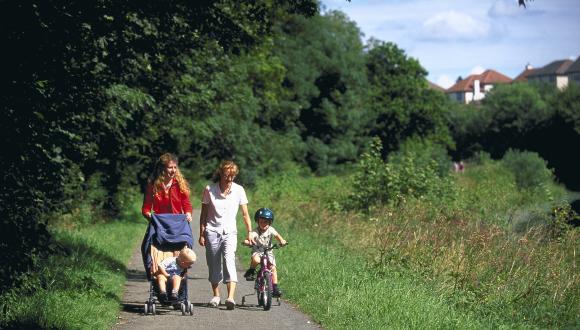Types of network
Landscape ecology sees various types of network as critically important, as they help to deal with a range of problems.
A habitat network is one that is focused on the connectivity of a single habitat or species. The focus on a habitat may be more or less specific, e.g. woodland in general, or Caledonian pinewood specifically.
The main aim of a habitat network is to enhance biodiversity. It does this by improving individual areas of habitat and tackling the problem of habitat fragmentation. This allows species to move between one suitable area and another.
Connectivity will be even more crucial as climate change takes hold and species are forced to seek out new areas with the right climatic conditions. Find out more about habitat networks and climate change.
Mapping a habitat network helps us to understand existing habitat connectivity, and prioritise areas for action. It may be that the network could be expanded or better managed, or its connectivity increased. Making such changes could improve the resilience of a habitat type or enable a specific species to make a suitable move.
Visit the Forest Research website to find out about our joint project to map Scotland’s forest habitat network.
A habitat network (or an integrated habitat network) may be a key component of a green network.
Green networks
Habitat and green networks share some features and objectives but their main aims differ. A green network focuses on delivering social and economic benefits as well as environmental improvements.
For example, developing a green network might involve:
- providing paths or creating open space to encourage people to enjoy the outdoors – which can improve health and well-being
- establishing areas of land to act as sustainable urban drainage systems – helping to reduce flood risk
Many of these actions will also help to improve the economic status of an area, by making it a more attractive place to live and work.
Some of the activities involved in developing a green network will also reduce habitat fragmentation. A green network is thus likely to deliver a broader range of benefits for both people and wildlife than a habitat network.
Sometimes the components of a green network – e.g. its paths, woods and open areas – are referred to as green infrastructure.
Integrated habitat networks
An integrated habitat network combines the needs of several habitats and species.
For example, the Glasgow and Clyde Valley Green Network partnership has developed an integrated habitat network that covers a mix of habitats such as:
- unimproved grassland
- floodplain wetland
- woodland
- raised bog
Using the correct terms
‘Corridor’ or ‘green corridor’ is sometimes used to refer to areas which link one habitat patch with another – often when what is meant is a network.
Corridor isn't always a very helpful term as it implies a linear shape, which may or may not be appropriate.
It also suggests that the connection between two habitat patches has to be a distinct, physical linkage on the ground. This isn’t always the case – areas of habitat might have functional connectivity rather than structural connectivity.
Find out more
Guidance on the interpretation and use of habitat network models
Habitat networks – reviewing the evidence base: Final Report







